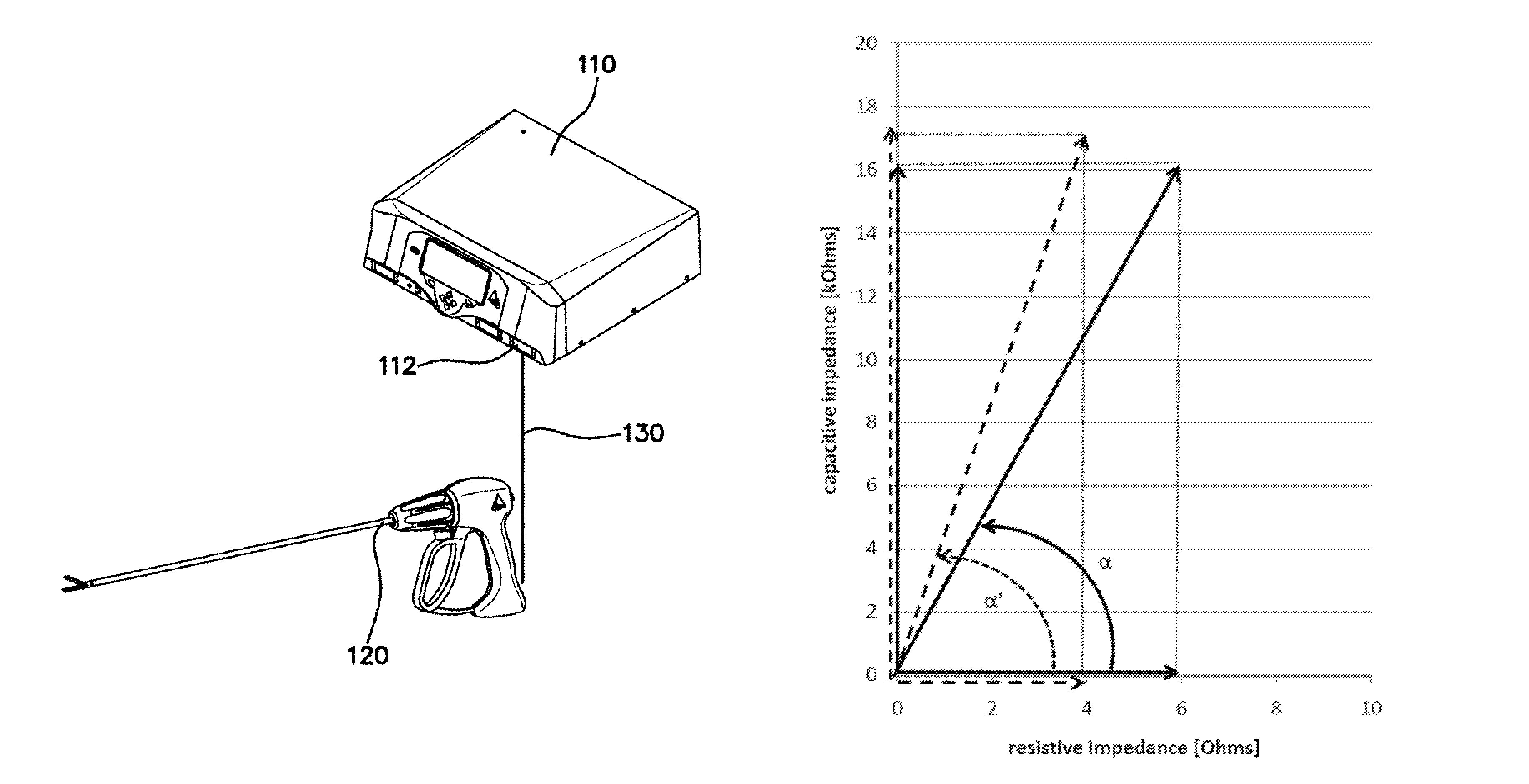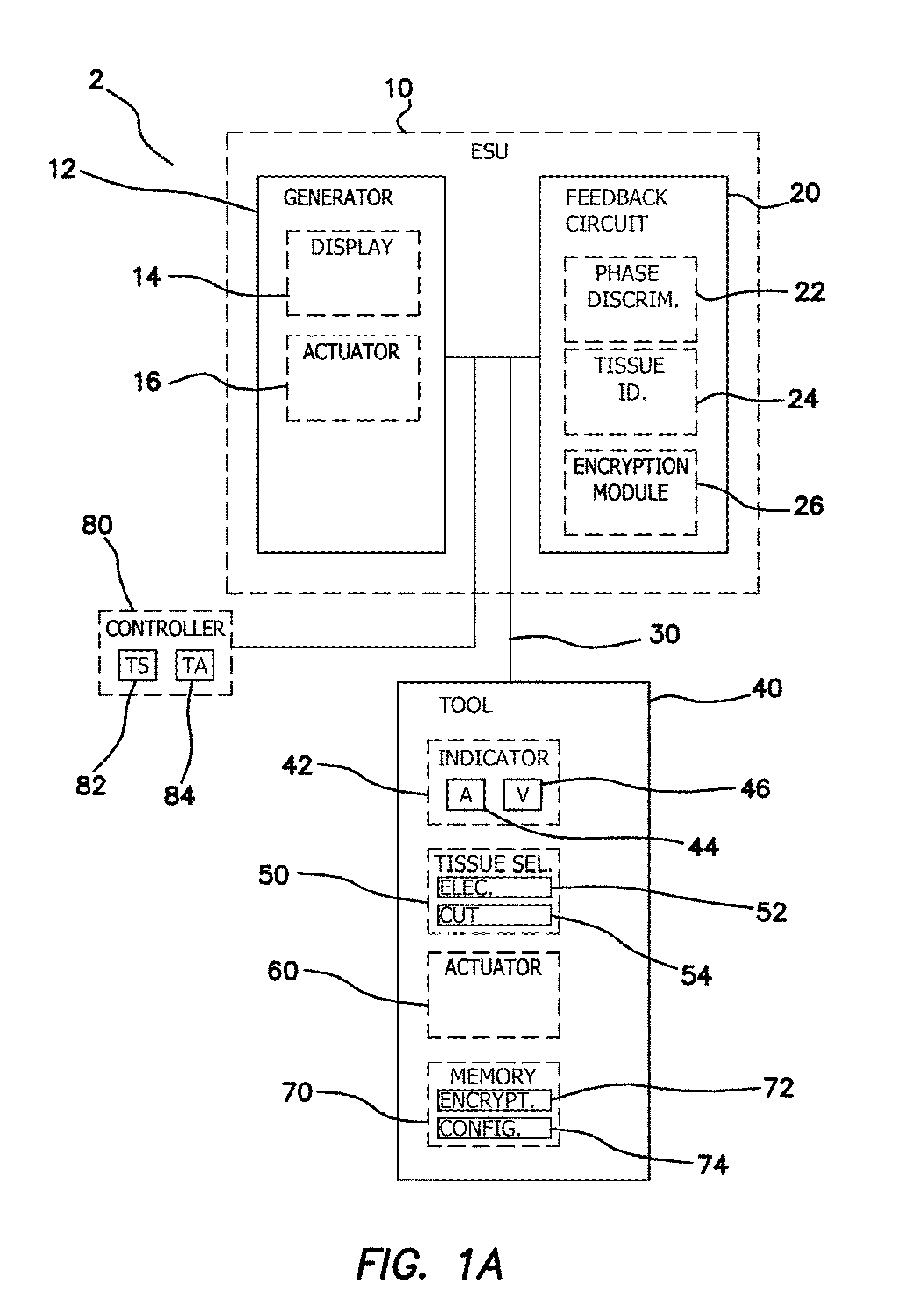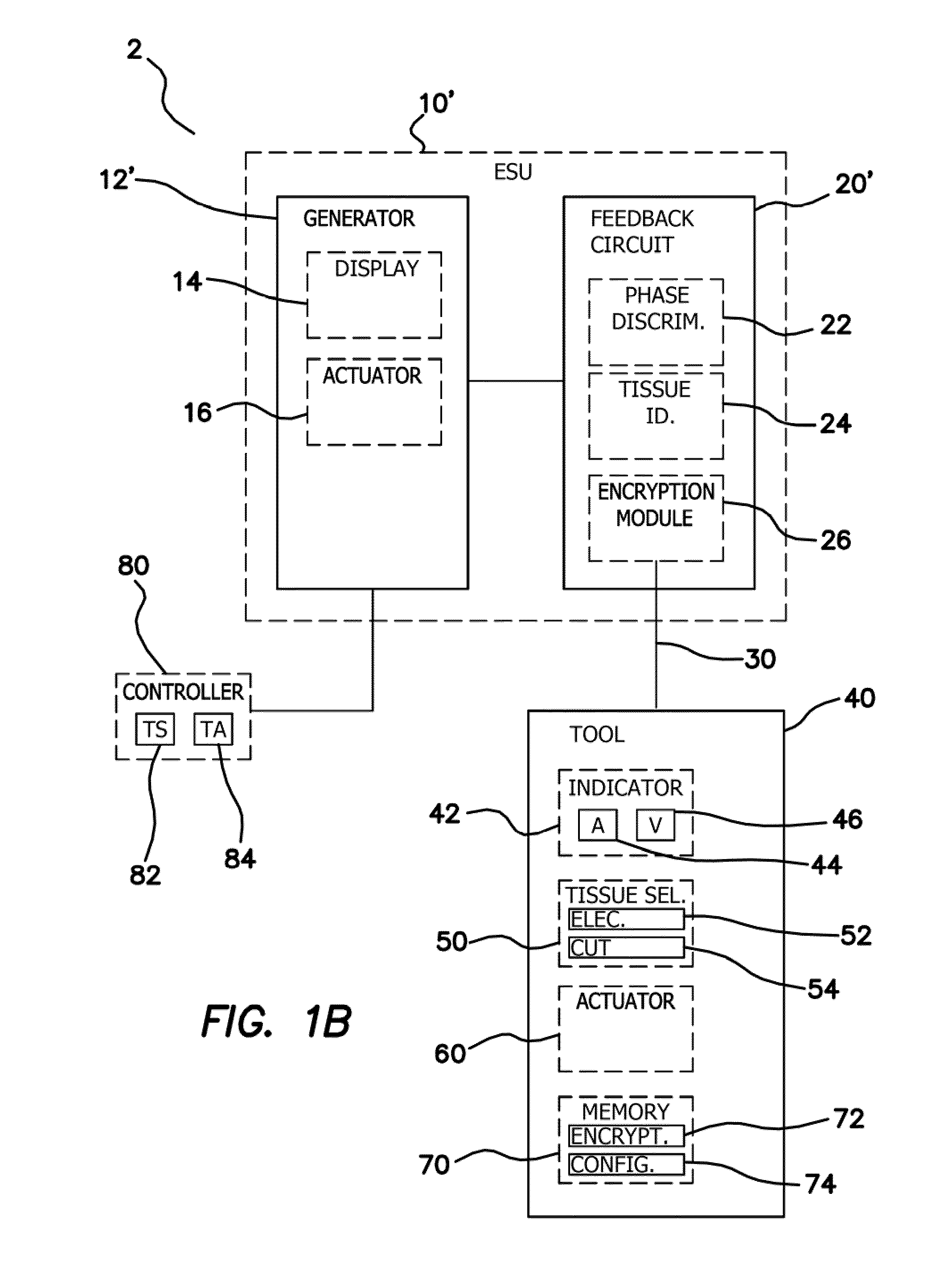Electrosurgical system
a technology of electrosurgical and electrical burns, applied in the field of electrosurgical systems and methods, can solve the problems of electrical burns, bleeds, and the risk of certain types of patient injuries, and achieve the effect of increasing the functionality of the tool
- Summary
- Abstract
- Description
- Claims
- Application Information
AI Technical Summary
Benefits of technology
Problems solved by technology
Method used
Image
Examples
Embodiment Construction
[0156]The following description is provided to enable any person skilled in the art to make and use the surgical tools and perform the methods described herein and sets forth the best modes contemplated by the inventors of carrying out their inventions. Various modifications, however, will remain apparent to those skilled in the art. It is contemplated that these modifications are within the scope of the present disclosure.
Electrosurgical System
[0157]FIG. 1A illustrates a schematic diagram of an electrosurgical system 2. The electrosurgical system 2 can comprise an electrosurgical unit (ESU) 10 and an electrosurgical tool 40. The electrosurgical tool 40 can be electrically coupled to the electrosurgical unit 10. In some embodiments, an electronic coupler 30 such as an electrical wire, wire bundle, or cable can electrically couple the electrosurgical tool 40 to the ESU 10. In some embodiments, the electrosurgical system 2 can optionally further comprise an external tool controller 80...
PUM
 Login to View More
Login to View More Abstract
Description
Claims
Application Information
 Login to View More
Login to View More - R&D
- Intellectual Property
- Life Sciences
- Materials
- Tech Scout
- Unparalleled Data Quality
- Higher Quality Content
- 60% Fewer Hallucinations
Browse by: Latest US Patents, China's latest patents, Technical Efficacy Thesaurus, Application Domain, Technology Topic, Popular Technical Reports.
© 2025 PatSnap. All rights reserved.Legal|Privacy policy|Modern Slavery Act Transparency Statement|Sitemap|About US| Contact US: help@patsnap.com



